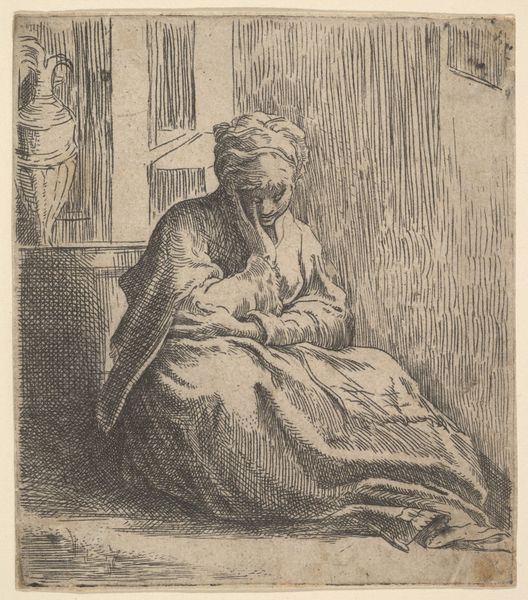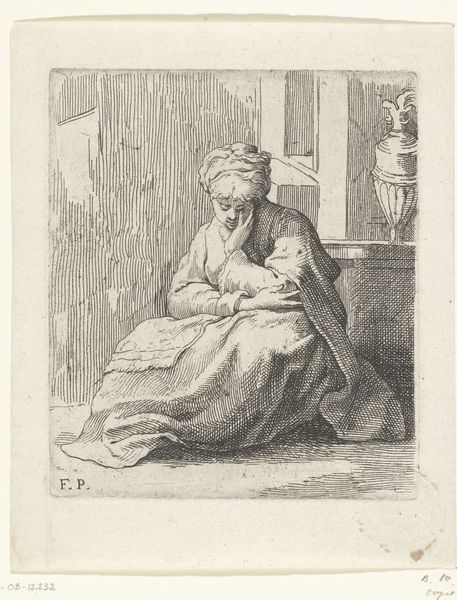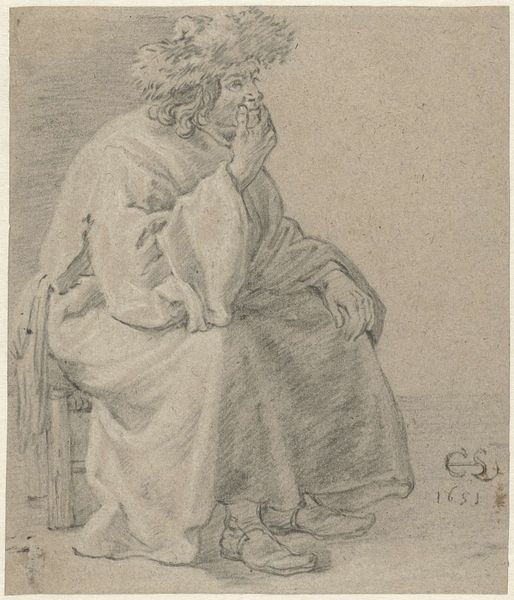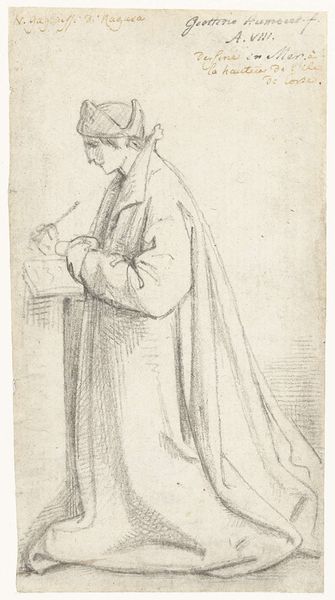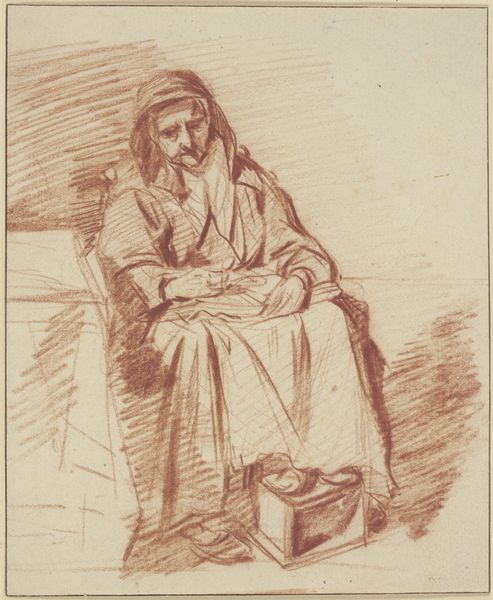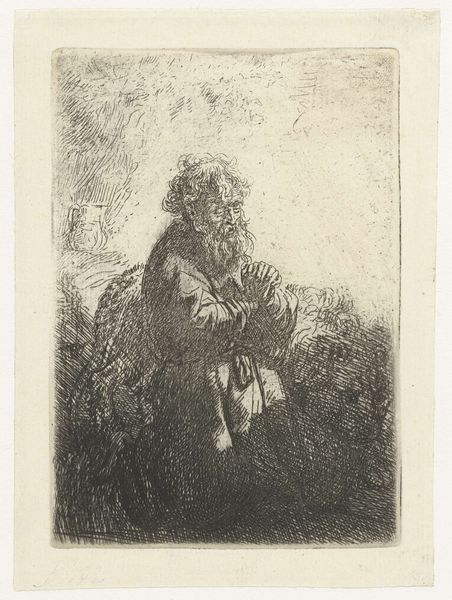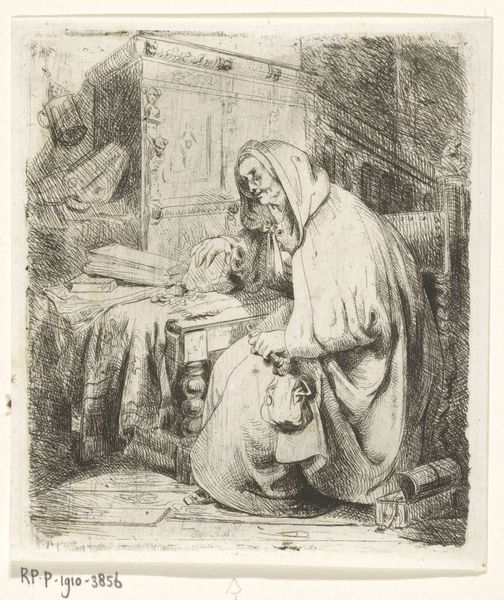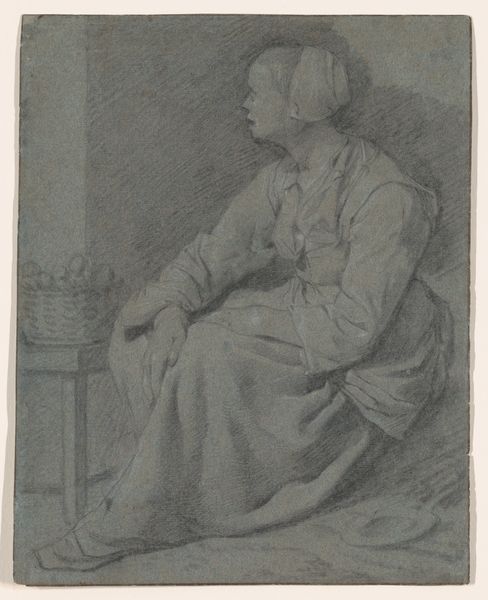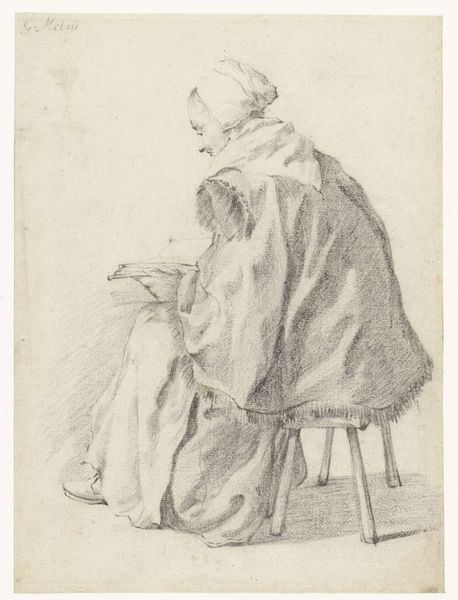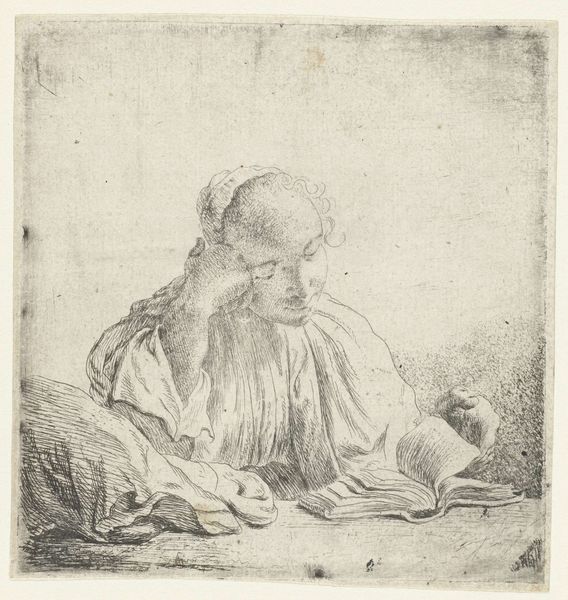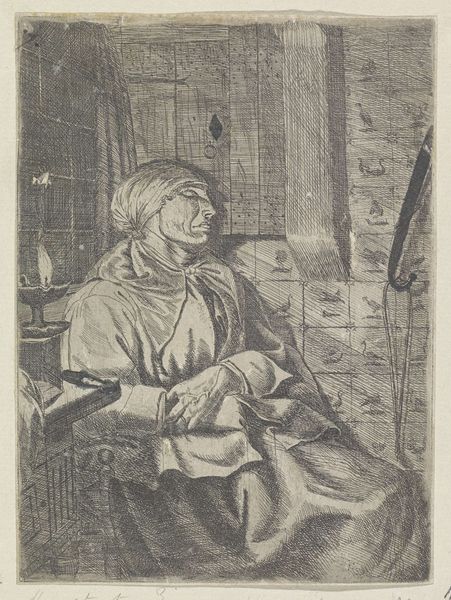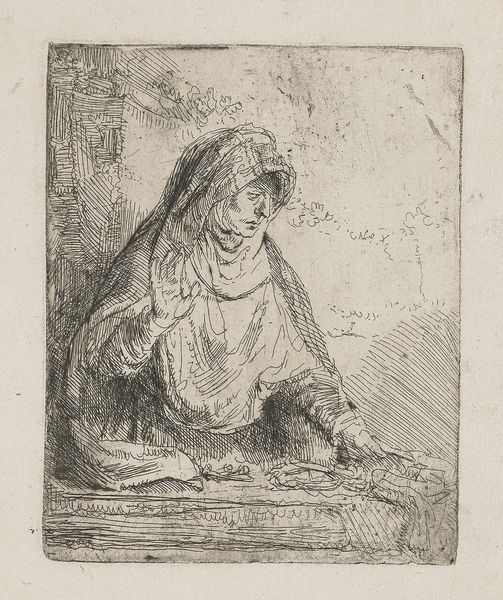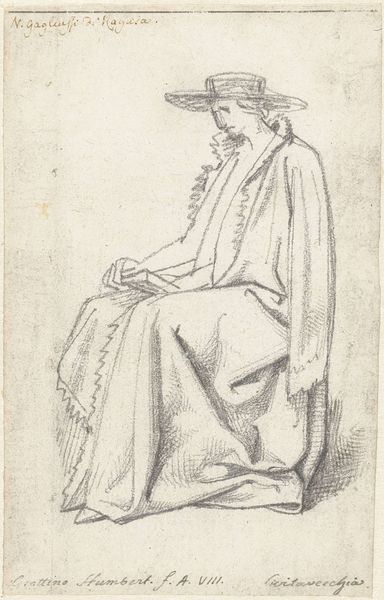
print, etching, engraving
#
portrait
# print
#
etching
#
figuration
#
italian-renaissance
#
engraving
Dimensions: height 129 mm, width 111 mm
Copyright: Rijks Museum: Open Domain
Curator: Welcome. Before us hangs Parmigianino's etching "Melancholie," dating from somewhere between 1524 and 1540. It’s currently housed here at the Rijksmuseum. Editor: A fitting title; immediately, I'm struck by the air of despondency radiating from this figure. The hunched posture, the veiled face – there's a heavy silence in this composition. Curator: Indeed. Observe how Parmigianino uses dense, almost chaotic, hatching to create shadows, particularly around the face and folds of the fabric. This textural contrast throws into sharp relief certain compositional details. The sharp, vertically scored wood paneling, and the decorative vase give some depth, though are kept simple, functional even. Editor: Functionality that is sharply disrupted! It’s nearly impossible not to project a sense of gendered despair onto her form – the downcast gaze almost suggests shame, perhaps alluding to the restricted roles imposed upon women in 16th-century Italy. This image speaks of grief and marginalization. Is she a discarded mistress or simply weighed down by domestic drudgery? Curator: A compelling reading! However, within the Mannerist tradition, we must also consider the artifice at play. The melancholic figure was, by Parmigianino's time, something of a trope, a display of emotion cultivated for aesthetic impact. Notice, too, the complex drapery – its arrangement serves a primarily visual, rather than realistic, function. Editor: I don't dispute the stylized conventions, but those very conventions become tools for exploring the lived experiences of women. Look at the scale of the figure in relation to that severe background, the rigid lines only serve to compress and isolate. The use of this popular melancholic image almost normalizes feelings we often assign specifically to being feminine. We can’t discount the socio-political dimensions shaping its emotional register. Curator: It's in grappling with this very interplay between form and content that the richness of art history emerges. Considering “Melancholie” through both formal analysis and contextual understanding brings us to a much fuller comprehension of this powerful little print. Editor: A comprehension that is, above all, empathetic. Even across centuries, art allows us a space for understanding and feeling with subjects so easily disregarded.
Comments
No comments
Be the first to comment and join the conversation on the ultimate creative platform.
